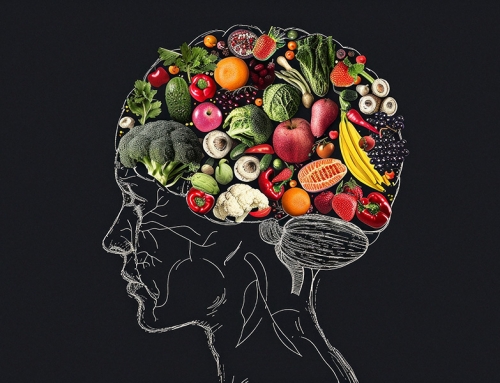Introduction
Eating disorders are psychological conditions marked by significant and ongoing disturbances in eating patterns and the uncomfortable thoughts and emotions that go along with them. They can be extremely severe conditions that have an impact on social, psychological, and physical function.1
Although many people may occasionally worry about their health, weight, or looks, some people develop a fixation or obsession with food restriction, weight loss, and body image. These could indicate an eating disorder.
You cannot choose to have an eating disorder. The physical and emotional health of a person may be impacted by these illnesses. Sometimes they can even pose a threat to life. However, eating problems are fully reversible with treatment. Given the current obesity epidemic, avoiding overeating is a topic that is frequently discussed. You probably don’t hear about individuals who have access to food but struggle with undereating nearly as frequently
Types of Eating Disorders
Avoidant/Restrictive Food Intake Disorder – An eating disorder called ARFID (Avoidant/Restrictive Food Intake Disorder) is characterised by extremely picky eating habits, irregular meal patterns, or both. For youngsters, it frequently causes major nutrient and energy shortages as well as failure to gain weight. 2
Anorexia nervosa – Anorexia is a significant mental illness as well as an eating disorder. Anorexics aim to maintain the lowest possible weight by undereating, overexercising, or a combination of the two. They begin to hunger, which might make them very unwell. 3
The American Psychiatric Association has created specific criteria to diagnose it. The following are indications of anorexia nervosa:1
- Significant nutritional restriction results in significantly lower body weight than anticipated.
- A persistent worry of gaining weight despite having a modest body weight, or actions that prevent weight increase.
- A deviation in the way body weight or form is perceived, an obsession with self-evaluation based on body weight or shape, or a persistent failure to recognise the gravity of low body weight.
Bulimia nervosa – Binge eating and incorrect compensatory behaviour to regulate weight are hallmarks of the eating disorder bulimia nervosa, which can have potentially harmful consequences.4
Rumination disorder – The backward movement of previously consumed food from the stomach to the mouth is referred to as rumination disorder. Then, the food is chewed again before being swallowed or spit out. Rumination involves a pointless contraction of the abdominal muscles. A viral disease, emotional discomfort, or a physical injury could be the initial triggers. 5
Binge Eating disorder – The severe, potentially fatal, and treatable eating disorder known as binge eating disorder (BED) is characterised by recurrent episodes of eating a lot of food, frequently quickly and to the point of discomfort, feeling out of control while doing so, feeling shame, distress, or guilt afterwards, and not frequently engaging in unhealthy coping mechanisms (such as purging) to deal with the binge eating. 6
Pica – Pica is the practice of repeatedly ingesting non-nutritional items like dirt or paint.7 People who suffer from pica frequently want and consume inedible substances like dirt, clay, or chalk. Pregnant women, those with iron deficiency, people with intellectual disabilities, and people who have other psychiatric disorders like schizophrenia are more likely to experience it.
Common Symptoms 11
Low body mass can cause several of the most prevalent symptoms, including:
- amenorrhea (cessation of menstrual periods in women)
- having frigid sensations and cool extremities
- loss of muscle mass, light-headedness, or fainting absence of growth or development (in adolescents)
- diarrhoea or constipation, difficulty thinking, convulsions, or unusual sensations in the extremities
- fine, black hair and dry skin.
- Fainting or even serious medical issues, like an irregular heart rhythm.
Causes – The reasons (or causes) of eating problems are generally unknown. According to research, these factors could be involved: 12
- external influences, such as a society that values thinness and links it to one’s self-worth
- an inherited propensity
- changed brain structure or function
Conclusion
Many people have the misperception that eating disorders are a deliberate attempt to appear attractive or attract attention. In reality, they are a collection of poorly understood, possibly fatal illnesses that may result from genetic factors or abnormal brain activity. Factors contributing to eating disorders are not fully understood, however, existing literature suggests a combination of genetic, biological, behavioural, psychological, and social factors can raise a person’s risk. 13
The approaches to treat eating disorders include a combination of psychotherapy, medical care and monitoring, nutritional counselling, and medications. People with eating disorders are often prone to other mental disorders such as anxiety or depression. Hence it is crucial to address these issues in the treatment plan.8
More studies are urgently required to comprehend these illnesses better and develop more effective treatments.
References:
- American Psychiatric Association (APA)- //www.psychiatry.org/patients-families/eating-disorders/what-are-eating-disorders
- Walden Behavioral Care – //www.waldeneatingdisorders.com/what-we-treat/arfid/
- National Health Service- //www.nhs.uk/mental-health/conditions/anorexia/overview/
- Jain A, Yilanli M. Bulimia Nervosa. [Updated 2022 Aug 1]. //www.ncbi.nlm.nih.gov/books/NBK562178/
- National Center for Advancing Translational Sciences- //rarediseases.info.nih.gov/diseases/7594/rumination-disorder
- NATIONAL EATING DISORDERS ASSOCIATION- //www.nationaleatingdisorders.org/learn/by-eating-disorder/bed
- Section of Behavior Medicine at the Children’s Hospital at The Cleveland Clinic. Walker and M.C. Roberts (Eds.) The Handbook of Clinical Child Psychology (3rd Ed., 2001). New York: NY: John Wiley & Sons
- National Institute of Mental Health (NIMH) – //www.nimh.nih.gov/health/publications/eating-disorders
- National Health Service – //www.nhs.uk/mental-health/feelings-symptoms-behaviours/behaviours/eating-disorders/overview/
- Eating Disorders, Mental Health and Body Image – //theforum.sph.harvard.edu/events/eating-disorders-mental-health-and-body-image/
- NATIONAL EATING DISORDERS ASSOCIATION- //www.nationaleatingdisorders.org/warning-signs-and-symptoms
- National Institute of Mental Health – //www.nimh.nih.gov/health/topics/eating-disorders#part_2269
- National Institute of Mental Health – //www.nimh.nih.gov/health/publications/eating-disorders#part_9969
Affiliation:
- Dean and Distinguished University Professor at School of Public Health, University of Memphis, TN, USA
- Foundation of Healthcare Technologies Society, New Delhi, India






Leave A Comment